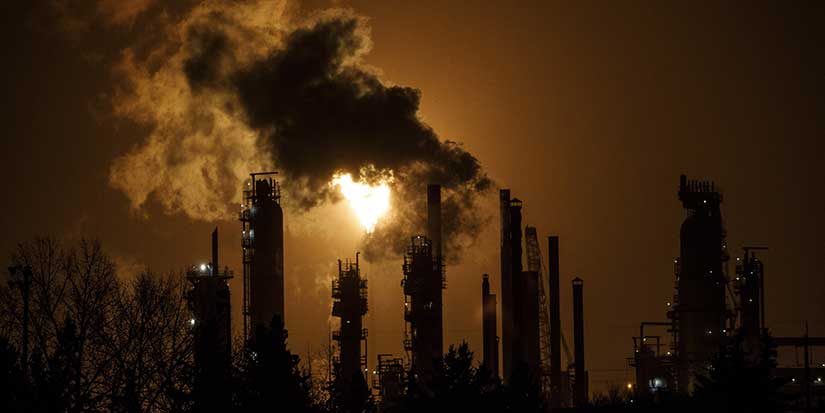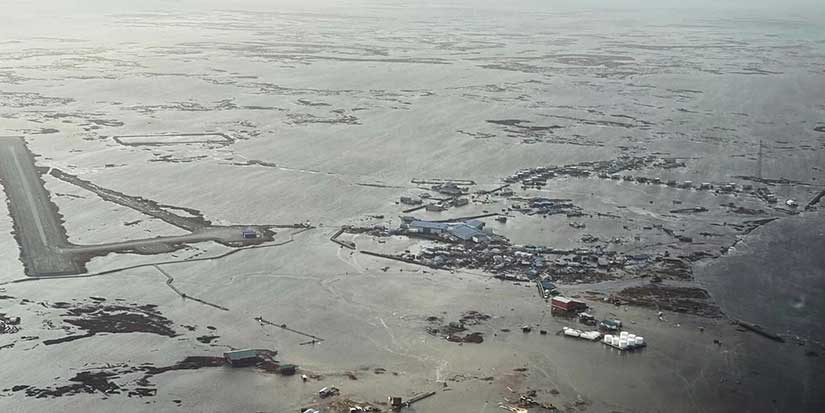National News
Surging CO2 levels a sign Canada must resist climate backsliding: scientist
Published 11:56 PDT, Wed October 15, 2025
—
A leading Canadian climate scientist says a new report showing planet-warming carbon dioxide levels have soared to record amounts in 2024 is the latest sign Canada must resist pressure to backslide on climate action.
The World Meteorological Organization's annual greenhouse gas bulletin says the CO2 growth rate, which has tripled since the 1960s, reflects a combination of continued fossil fuel emissions and reductions in how much is absorbed in forests, oceans and other natural "carbon sinks."
Damon Matthews, a climate scientist at Concordia University, says it should be a wake-up call for governments in Canada and abroad to rapidly bring down emissions to stabilize the climate.
Matthews, a member of an independent federal climate advisory group, says Canada must resist the bullying by U.S. President Donald Trump who has assailed climate change as a "con job," cancelled major renewable projects, pulled the U.S. out of the United Nations climate accord and urged global leaders to back off clean energy.
Wednesday's report says the likely reason for the record CO2 growth was large contributions from wildfire emissions and reduced uptake from the land and the ocean in 2024, the hottest year on record boosted by a strong El Nino, a natural climate pattern.
About half of the carbon emitted into the atmosphere is absorbed by the Earth's land ecosystems and oceans.
Yet, the report notes there are concerning signs that uptake is shrinking. As temperatures rise, oceans absorb less CO2. Land carbon sinks are also reduced by drier vegetation or more intense wildfires.
Matthews says the world has yet to hit a so-called "new normal."
"We are nowhere near the new normal at the current trend. Things are going to continue getting worse and worse until we actually solve the problem fundamentally,' said Matthews, an expert on carbon budgeting.
"We need to, you know, cut our emissions globally in half and then keep decreasing them towards zero in order to keep levels stable."
The findings in Wednesday's bulletin are consistent with a June report published by Matthews and more than 60 other scientists who found the world was on pace to produce enough greenhouse gas emissions in the next three years to blow past the international global warming target of 1.5 degrees, Matthews said.
United Nations climate chief, Simon Stiell, has said the Earth is now on track for 3 C.
The WMO's bulletin comes ahead of the UN climate summit known as COP30, to be held next month in Brazil, where there will be calls for leaders to ramp up climate action.
“Sustaining and expanding greenhouse gas monitoring are critical to support such efforts,” Oksana Tarasova, co-ordinator of the WMO's Greenhouse Gas Bulletin, said in a statement.
Growth rates of CO2 have accelerated from an annual average increase of 2.4 parts per million per year in the decade from 2011 to 2020, to 3.5 ppm from 2023 to 2024, WMO said.
The U.S. National Oceanic and Atmospheric Administration's global data for this year through June reveals that carbon dioxide rates are still rising at one of the highest rates on record, yet not quite as high as from 2023 to 2024.
– Jordan Omstead, The Canadian Press
With files from The Associated Press.































